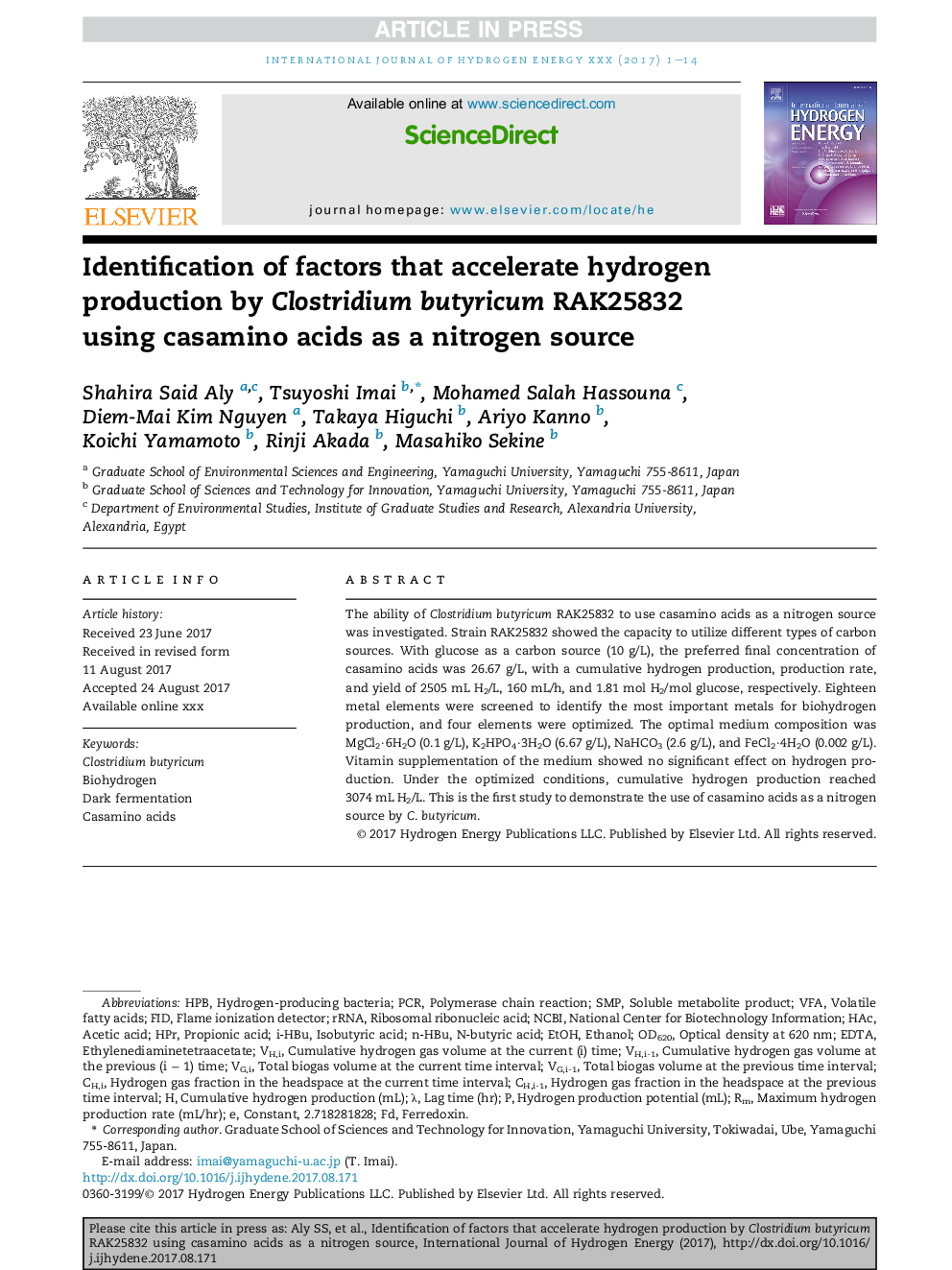| Article ID | Journal | Published Year | Pages | File Type |
|---|---|---|---|---|
| 7707407 | International Journal of Hydrogen Energy | 2018 | 14 Pages |
Abstract
The ability of Clostridium butyricum RAK25832 to use casamino acids as a nitrogen source was investigated. Strain RAK25832 showed the capacity to utilize different types of carbon sources. With glucose as a carbon source (10 g/L), the preferred final concentration of casamino acids was 26.67 g/L, with a cumulative hydrogen production, production rate, and yield of 2505 mL H2/L, 160 mL/h, and 1.81 mol H2/mol glucose, respectively. Eighteen metal elements were screened to identify the most important metals for biohydrogen production, and four elements were optimized. The optimal medium composition was MgCl2·6H2O (0.1 g/L), K2HPO4·3H2O (6.67 g/L), NaHCO3 (2.6 g/L), and FeCl2·4H2O (0.002 g/L). Vitamin supplementation of the medium showed no significant effect on hydrogen production. Under the optimized conditions, cumulative hydrogen production reached 3074 mL H2/L. This is the first study to demonstrate the use of casamino acids as a nitrogen source by C. butyricum.
Keywords
VFArRNAn-Butyric acidHPRClostridium butyricumHPBNCBIEtOHflame ionization detectorEthanolEDTAethylenediaminetetraacetateIsobutyric acidAcetic acidribosomal ribonucleic acidPropionic acidCasamino AcidsVolatile fatty acidsHAChydrogen-producing bacteriaBiohydrogenDark fermentationSMPFIDNational Center for Biotechnology Informationpolymerase chain reactionPCR
Related Topics
Physical Sciences and Engineering
Chemistry
Electrochemistry
Authors
Shahira Said Aly, Tsuyoshi Imai, Mohamed Salah Hassouna, Diem-Mai Kim Nguyen, Takaya Higuchi, Ariyo Kanno, Koichi Yamamoto, Rinji Akada, Masahiko Sekine,
